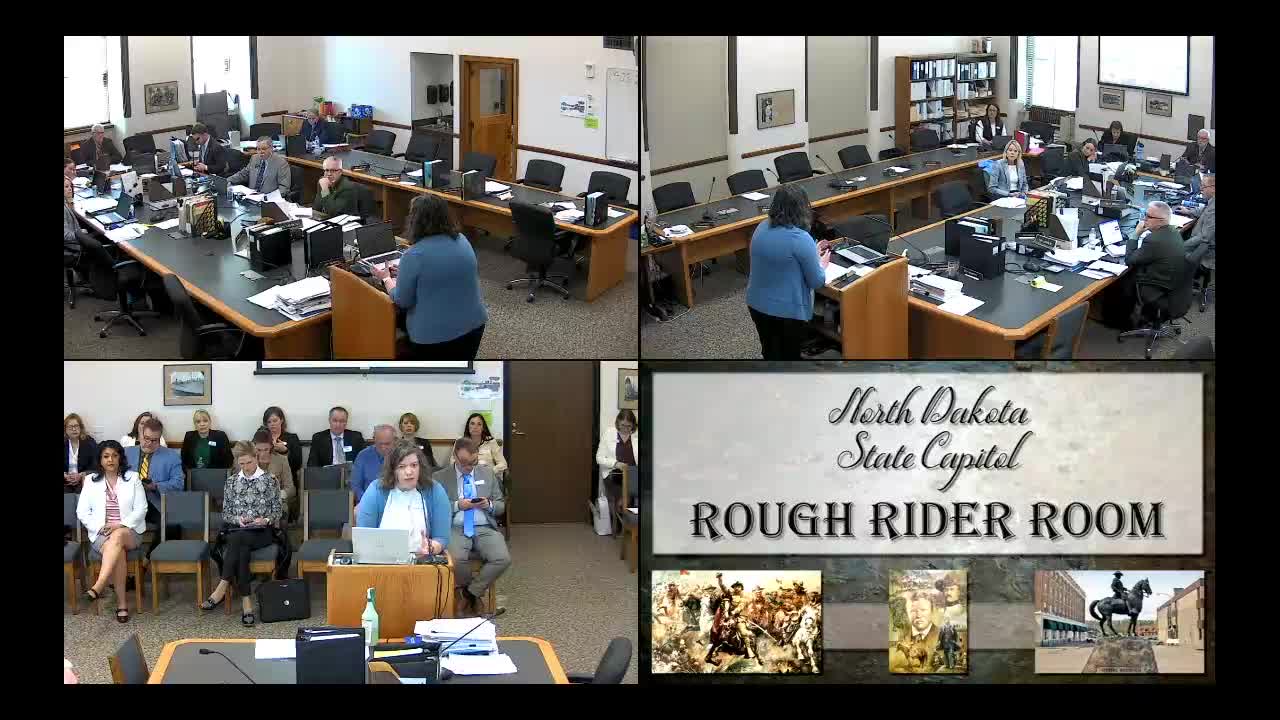North Dakota Senate proposes $1M funding for rural ambulance service reimbursement
April 25, 2025 | House of Representatives, Legislative, North Dakota
This article was created by AI summarizing key points discussed. AI makes mistakes, so for full details and context, please refer to the video of the full meeting. Please report any errors so we can fix them. Report an error »

In a pivotal meeting of the North Dakota Legislature's Conference Committee on April 25, 2025, lawmakers engaged in a spirited discussion about the future of rural ambulance services in the state. The atmosphere was charged with urgency as representatives voiced concerns over the sustainability of these essential services, particularly in remote areas where recruitment and retention of personnel have become increasingly challenging.
The committee examined a proposal from the governor's budget, which aimed to elevate reimbursement rates for ambulance services across the state to the highest quartile for rural areas. This initiative seeks to ensure that rural providers receive adequate financial support, potentially aligning their rates with those of urban counterparts. However, the conversation quickly turned to the complexities of funding and the real issues facing rural ambulance districts.
One representative highlighted the struggle to maintain volunteer services in rural communities, noting that many individuals are drawn to urban jobs, leaving a dwindling pool of volunteers to respond to emergencies. "It's not just about funding," they emphasized. "It's about having enough people available to run these services." This sentiment resonated with others in the room, who acknowledged the dedication of those serving on rural ambulance boards but expressed concern that without intervention, these vital services could diminish.
As discussions progressed, a proposal emerged to allocate an additional $1 million from the general fund to bolster ambulance services. This move was met with mixed reactions, with some members advocating for the funding while others questioned its sufficiency in addressing the broader challenges faced by rural emergency services.
The committee's deliberations underscored a critical reality: the survival of rural ambulance services hinges not only on financial support but also on community engagement and the commitment of individuals willing to serve. As the meeting concluded, the urgency of the situation was palpable, leaving lawmakers with the pressing task of finding solutions that would ensure the safety and well-being of all North Dakotans, regardless of where they live. The future of rural ambulance services remains uncertain, but the discussions in the conference committee mark a significant step toward addressing these pressing issues.
The committee examined a proposal from the governor's budget, which aimed to elevate reimbursement rates for ambulance services across the state to the highest quartile for rural areas. This initiative seeks to ensure that rural providers receive adequate financial support, potentially aligning their rates with those of urban counterparts. However, the conversation quickly turned to the complexities of funding and the real issues facing rural ambulance districts.
One representative highlighted the struggle to maintain volunteer services in rural communities, noting that many individuals are drawn to urban jobs, leaving a dwindling pool of volunteers to respond to emergencies. "It's not just about funding," they emphasized. "It's about having enough people available to run these services." This sentiment resonated with others in the room, who acknowledged the dedication of those serving on rural ambulance boards but expressed concern that without intervention, these vital services could diminish.
As discussions progressed, a proposal emerged to allocate an additional $1 million from the general fund to bolster ambulance services. This move was met with mixed reactions, with some members advocating for the funding while others questioned its sufficiency in addressing the broader challenges faced by rural emergency services.
The committee's deliberations underscored a critical reality: the survival of rural ambulance services hinges not only on financial support but also on community engagement and the commitment of individuals willing to serve. As the meeting concluded, the urgency of the situation was palpable, leaving lawmakers with the pressing task of finding solutions that would ensure the safety and well-being of all North Dakotans, regardless of where they live. The future of rural ambulance services remains uncertain, but the discussions in the conference committee mark a significant step toward addressing these pressing issues.
View full meeting
This article is based on a recent meeting—watch the full video and explore the complete transcript for deeper insights into the discussion.
View full meeting
